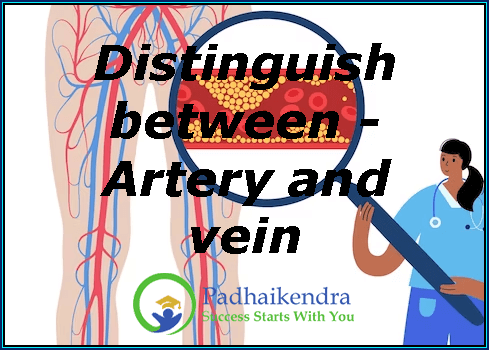Arteries and veins are both types of blood vessels in the body that play important roles in the circulatory system. There are several key differences between arteries and veins:
- Structure: Arteries have thicker walls and a smaller lumen (opening) compared to veins. This is because arteries must withstand the high pressure of blood being pumped from the heart, while veins have lower pressure and require a larger lumen to accommodate the flow of blood.
- Function: Arteries carry oxygenated blood away from the heart to the rest of the body, while veins carry deoxygenated blood back to the heart. However, there are some exceptions, such as the pulmonary artery, which carries deoxygenated blood from the heart to the lungs, and the pulmonary vein, which carries oxygenated blood from the lungs to the heart.
- Valves: Veins have one-way valves that help prevent backflow of blood, while arteries do not have valves.
- Color: Arteries appear brighter red than veins because they are carrying oxygenated blood, while veins appear darker red or blue because they are carrying deoxygenated blood.
Overall, the main differences between arteries and veins are their structure, function, presence of valves, and the color of the blood they carry.





